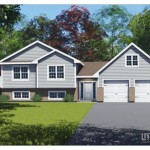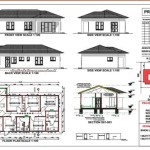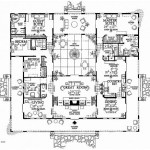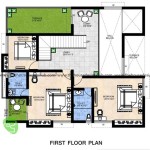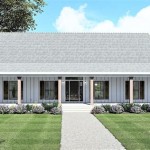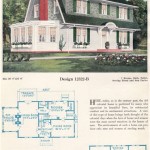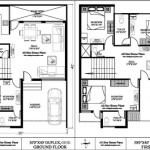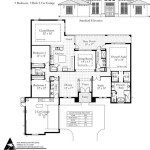Essential Aspects of Hurricane Proof Home Floor Plans
When it comes to protecting your home from the devastating effects of hurricanes, having a hurricane-proof floor plan is paramount. Hurricanes possess the formidable power to inflict significant damage on homes, leaving behind catastrophic consequences. However, by incorporating thoughtful considerations into your home's design, you can significantly enhance its resilience to these storms.
Here are several vital aspects to prioritize when designing a hurricane-proof home:
Elevated Structure
Raising the elevation of your home is one of the most effective measures to protect it from flooding. Hurricanes often bring heavy rainfall that leads to flooding, and an elevated home minimizes the risk of water damage to your living space. Building codes in hurricane-prone areas typically dictate minimum elevation requirements that must be met.
Reinforced Walls and Roof
The walls and roof of your home need to be constructed to withstand hurricane-force winds. Use impact-resistant materials for windows and doors to prevent shattering. Ensure that your roof is securely attached to the structure and has adequate bracing to resist high winds. Additionally, consider reinforcing exterior walls with steel or concrete for increased strength.
Garage Protection
Your garage is often the most vulnerable point of entry for wind and water. Protect it by installing impact-resistant doors and windows. Consider adding hurricane shutters or plywood coverings to reinforce the openings. If possible, design your garage with a separate entrance, allowing you to access it without entering the main living area, minimizing the risk of water intrusion.
Structural Integrity
The overall structural integrity of your home is crucial. Ensure that the foundation is solid and reinforced to withstand strong winds. Use high-quality materials for framing and construction, such as pressure-treated lumber and engineered beams. Employ proper engineering techniques to distribute the weight of the structure evenly and prevent collapse.
Compartmentalization
Compartmentalizing your home into smaller sections by using fire-rated walls and doors can help contain damage in the event of a breach. If one room is damaged, the fire-rated barriers can prevent the fire or water from spreading throughout the entire house.
Backup Power and Water Supply
Hurricanes can disrupt power and water services for extended periods. Include a backup power source, such as a generator, to ensure essential appliances and systems can still operate. Additionally, consider installing a rainwater harvesting system or a well to provide a reliable water supply during an emergency.
Evacuation Plan
Even with the best hurricane-proof design, having an evacuation plan in place is crucial. Identify evacuation routes and designated safe shelters in advance. Keep essential items, such as food, water, and first aid kits, readily available in an easily accessible location.
By incorporating these essential aspects into your hurricane-proof home floor plans, you can significantly increase your home's resilience to hurricanes and safeguard your family and belongings from the potentially devastating effects of these storms.

Hurricane Proof Homes Stilt Houses Piling Topsider

Hurricane Proof Homes Stilt Houses Piling Topsider

Hurricane Proof Homes Stilt Houses Piling Topsider

Hurricane Proof Homes Stilt Houses Piling Topsider

Moriviví House The Hurricane Proof Project That Builds Community Archdaily

Hurricane Proof House Plans Goodbye Bunker O Gorgeous

Hurricane Proof Homes Stilt Houses Piling Topsider

Hurricane Proof Homes Stilt Houses Piling Topsider

Floorplan Gallery Round Floorplans Custom Floor Plans House

Hurricane Proof Homes Stilt Houses Piling Topsider

